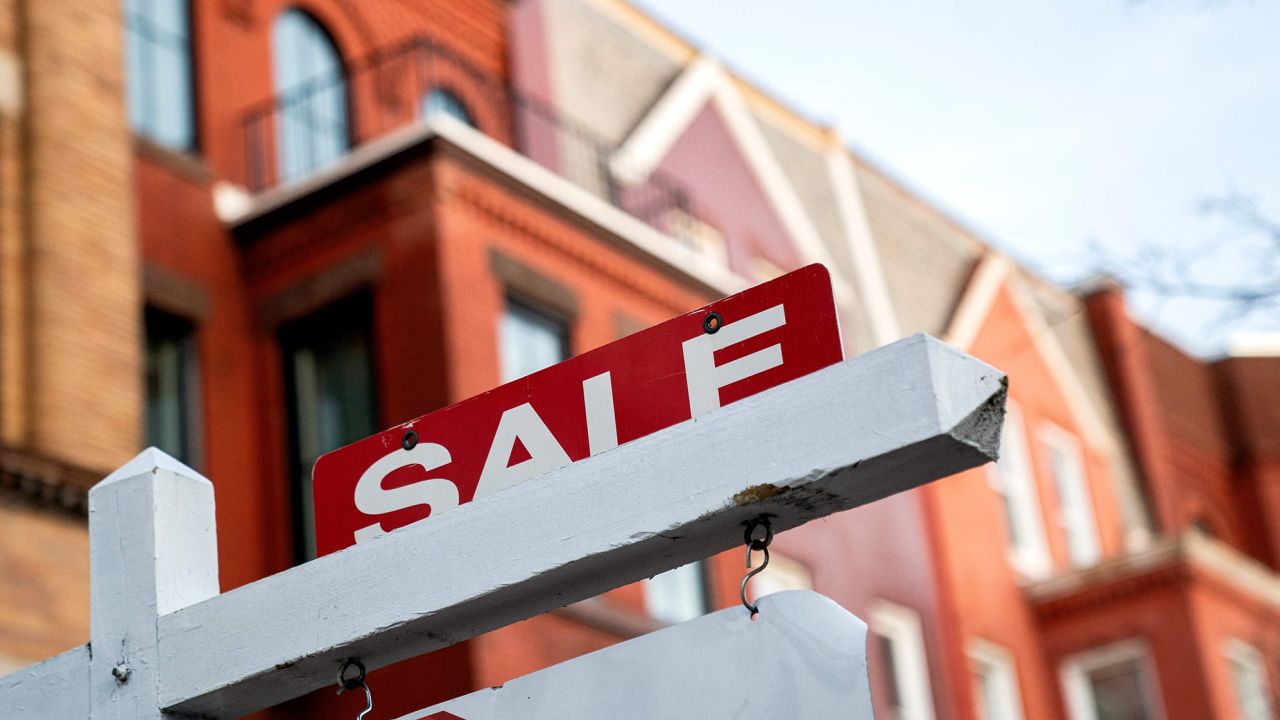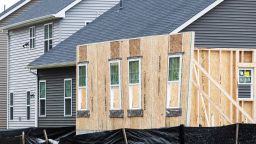US home sales fell in March, after a turnaround in February that followed a full year of declining home sales due to surging mortgage rates, according to a National Association of Realtors report released Thursday.
Sales of existing homes in March — which include single-family homes, townhomes, condominiums and co-ops — dropped 2.4% from February. Annually, sales were down 22% from a year ago and the seasonally adjusted annualized sales pace dropped from 5.69 million units a year ago to 4.44 million in March.
March’s fall in sales upended the momentum from February’s reversal that ended the longest streak of month-to-month declining home sales on record, going back to 1999 for all homes and 1968 for single-family homes.
Mortgage rates remain volatile — so far this year average rates have ranged from 6.09% to 6.73%. Mortgage rates climbed nearly all that distance in February, when many of the homes sold in March would have gone under contract.
“Home sales are trying to recover and are highly sensitive to changes in mortgage rates,” said Lawrence Yun, NAR chief economist. “Yet, at the same time, multiple offers on starter homes are quite common, implying more supply is needed to fully satisfy demand.”
The median price of a US home was lower this March than it was in March 2022, for the second month in a row following more than a decade of year-over-year increases.
The median existing home price was $375,700 in March, down 0.9% from a year ago. February marked the first monthly year-over-year price decline since February 2012. This is the biggest annual price decline since January 2012 when prices dropped 2%.
There are marked regional variations in prices, however. From last year, prices dropped most in the West (down 7.5%), where housing is more expensive. But prices were still climbing from last year in the South (up 0.3%) and the Midwest (up 1.7%) and the Northeast (up 1%).
“Home prices continue to rise in regions where jobs are being added and housing is relatively affordable,” Yun noted. “However, the more expensive areas of the country are adjusting to lower prices.”
Inventory remains stubbornly low, said Yun, but it is improving some.
Total housing inventory at the end of March was 980,000 units, up 5.4% from one year ago. Unsold inventory sits at a 2.6-month supply at the current sales pace, unchanged from February, but up from 2.0 months a year ago.
‘Unique housing market’
With sales and prices both down nationally, it might seem the market is edging toward a buyer’s market.
But Yun said that with inventory remaining at historic lows and strong demand in certain price categories, there is still a good deal of competition for homes that can result in bidding wars.
Last month, 28% homes sold for above the list price, which is a proxy for a multiple-offer situation, Yun said, and 65% sold within a month, which is a fairly swift market.
“It is a unique housing market,” said Yun. “Sales are down, prices are down, but from buyers’ perspective, it is still hard to get the home you want because you are competing with other buyers.”
There were fewer than 1 million homes for sale at the end of March. While it is up from a year ago, it is still 41% below March 2019, prior to the pandemic, when there were 1.7 million homes available.
While the typical listing remained on the market for 29 days in March — down from 34 days in February but up from 17 days a year ago — there were 17% fewer new listings coming to the market compared to last March.
“New listings are not coming on to the market,” said Yun. “Overall, the inventories are sitting longer, but fresh listings are not popping into the market. This is due to the lock-in effect of homeowners who love their 3% interest rate.”
Homebuyers remain sensitive to mortgage rates
Affordability is not only an issue for first-time homebuyers, but also for many repeat buyers who still need to take on a mortgage, said Danielle Hale, Realtor.com’s chief economist.
Many potential sellers feel “locked in” by their ultra-low existing mortgage rates that they bought or refinanced into over the past few years.
“This suggests that both existing home supply and demand will be sensitive to mortgage rate changes,” said Hale. “While both the total inventory of unsold homes and months supply climbed year over year, both measures remain lower than pre-pandemic norms.”
High mortgage rates, which is tamping down demand because buyers can’t afford the payments, are keeping prices from climbing.
“Nationwide, prices shrank for a second month as buyers continue to be selective and budget-conscious about the homes on which they are submitting offers,” said Hale.
Mid-April is typically among the best times to sell because it offers sellers a good mix of strong buyer demand, fast-selling homes, and rising prices, she said.
“Fortunately for buyers, as the number of sellers putting their homes on the market after this week climbs, competitiveness tends to ebb,” said Hale. “Unfortunately for buyers, this year’s seasonal surge in new listings may be more muted.”










